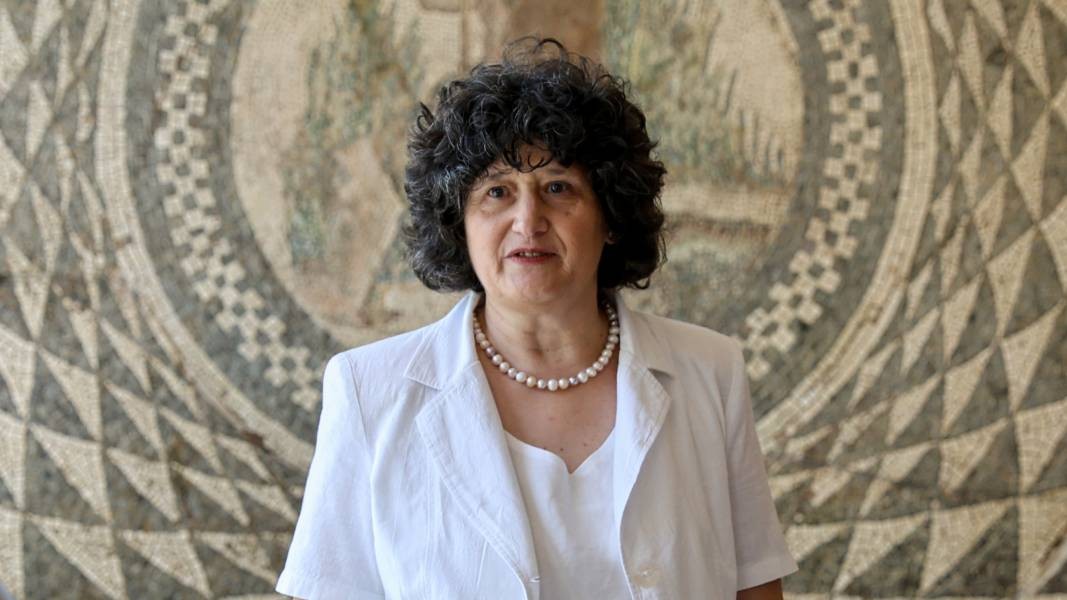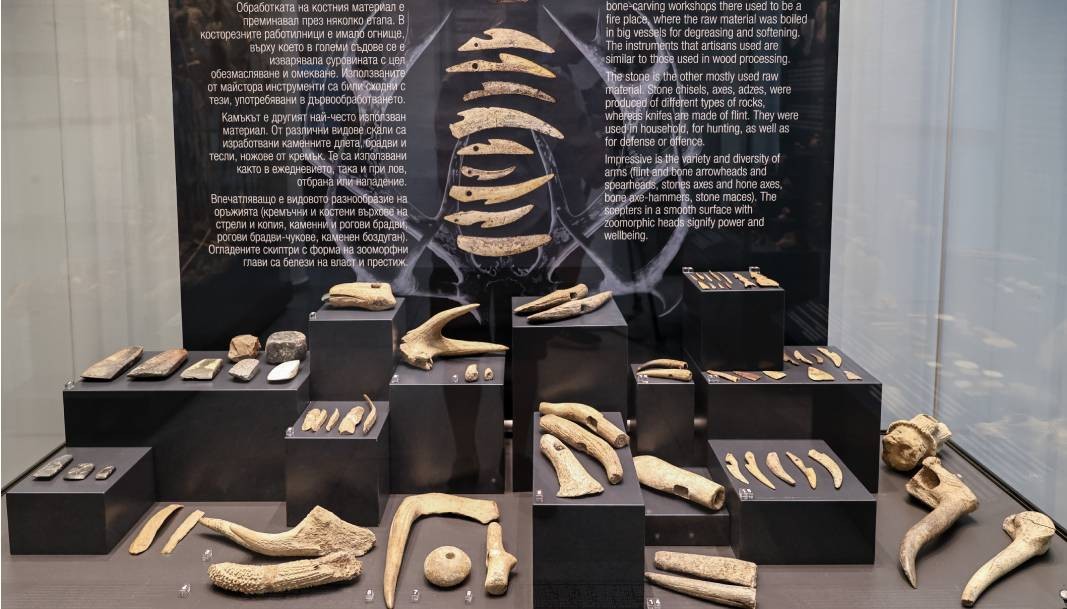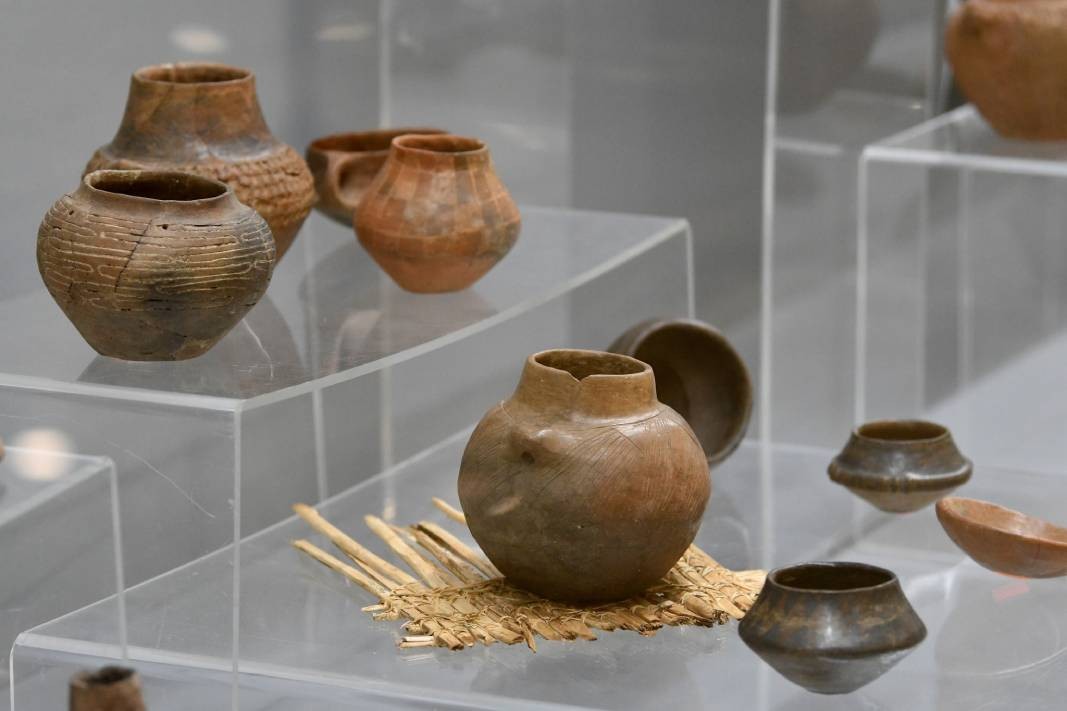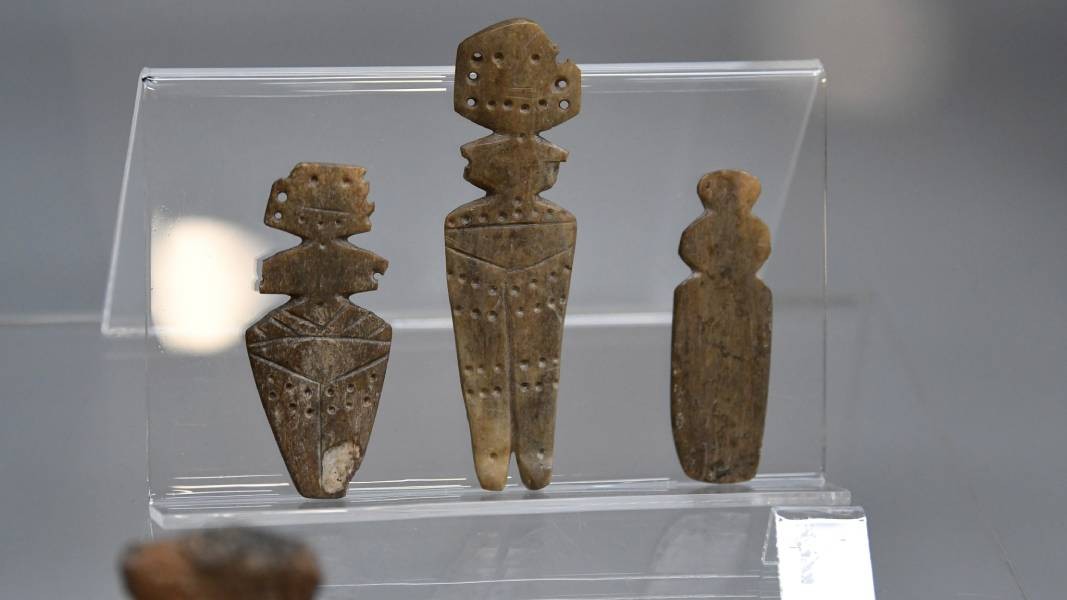Eight thousand years ago, one of the most mysterious cultures in the Balkans emerged in the area of the present-day village of Dolnoslav. In the area of Asenovgrad, between the plain and the mountains, archaeologists uncover settlement mounds with traces of prehistoric life dating from the end of the 7th to the middle of the 4th millennium BC. More than 5,300 finds allow us to take a glimpse into the past of a highly developed and still little-known civilization. ''So far, only the upper layer of Dolnoslav has been explored – a settlement from the late Chalcolithic age. But down below, at the base, there are still unexplored layers from the early Neolithic period'', says Rositsa Mitkova, head of the ''Prehistory'' fund at the Regional Archaeological Museum in Plovdiv:

"Their dwellings were constructed from poles driven into the ground, intertwined with twigs and covered with clay. The roof was a wood beam construction. Some of the houses had two stories. In Dolnoslav, planks for insulation against moisture and cold were found on the floor. People’s homes were most likely similar to the adobe houses found today in the fields.

These were the first farmers. They began cultivating the land with simple tools. Over time, during the Copper Age, they likely used bovine animals to cultivate larger areas. They also relied on hunting and fishing. In the early Neolithic period, they started to create exquisite vessels with polychrome decorations. In the late Chalcolithic era, there was a standardization in the production of ceramic, copper and gold items", said Rositsa Mitkova.

Archaeologists have discovered tools, instruments, small figurines of people and animals, dyes, jewelry and objects related to cults and magic. Most of the finds are from the late Chalcolithic Age, which aligns with the Varna Necropolis. One of the most interesting hypotheses connects Dolnoslav with ancient temple centers in the Rhodopes, such as Belintash, where astronomical observations were made. Found artifacts suggest that the population in the area was familiar with the movement of celestial bodies and used it in agriculture and their rituals. The most amazing thing is that Dolnoslav is older than Troy and is a contemporary of Sumer – two of the most significant early societies in the world, we learn from Rositsa Mitkova.

"These settlements are not isolated. They had contacts with the Mediterranean and the lands north of the Balkan Mountains, even north of the Danube, because we see that a common material culture was created in the late Chalcolithic Age. From the Carpathians to the Aegean Sea, culture was unified thanks to metallurgical trade links that led to the formation of pre-state alliances. Dolnoslav from the Calcolithic Age bears witness to active exchange of goods and ideas – including Mediterranean mussels and gold objects – which confirms the early knowledge of metallurgy", said Rositsa Mitkova.

The exact reasons for the destruction of the ancient settlement remain unknown. According to some people, it perished in a mass fire due to enemy attacks or internal conflicts at the end of the Chalcolithic period – a fate that befell other settlements in the region. Another possible cause is the onset of significant climate changes, which led to the drying up of water sources and forced migration.
5 facts testifying that Bulgaria has one of the oldest cultures in Europe
Oldest town in Europe near Provadia- the former “mint” of the Balkans
Exquisitely engraved vessels and finely crafted idols - Kozareva mound reveals its secrets
The new eco trail above the village of Nevsha in Vetrino Municipality (Varna Region) is now a reality. The 10-kilometer route, leading to the impressive rock formations known as Golyamo and Malko Bulo, was officially opened in the first days of May by..
Bulgaria’s Minister of Tourism Miroslav Borshosh and Zurab Pololikashvili, Secretary-General of the World Tourism Organization (UN Tourism), have officially signed the agreement for Bulgaria to host the 9th Global Conference on Wine Tourism,..
The Mini Bulgaria Park is an unusual place for a tourist tour. Here, as if in the palm of your hand, the most important landmarks of history, architecture, spiritual culture and natural landmarks of Bulgaria meet. One comes to take a bird's eye view..
The Rhodope Municipality of Ardino announced that it has begun preparing its candidacy for participation in the fifth edition of the..

+359 2 9336 661
